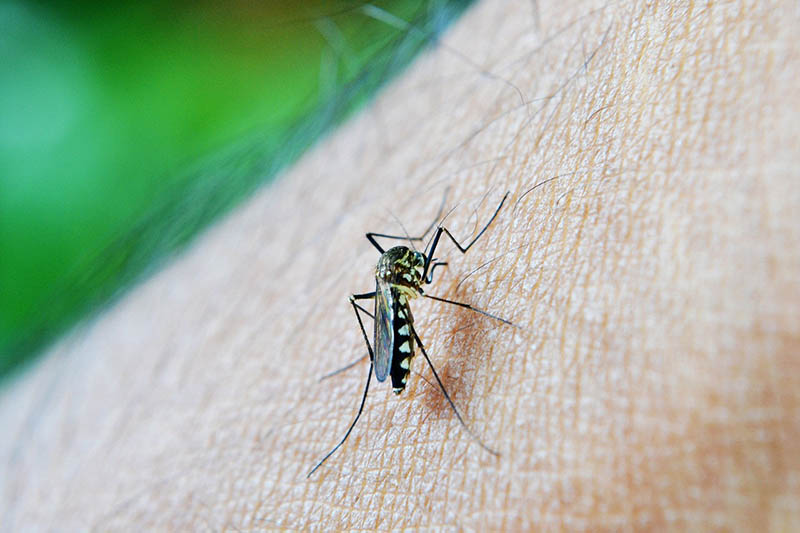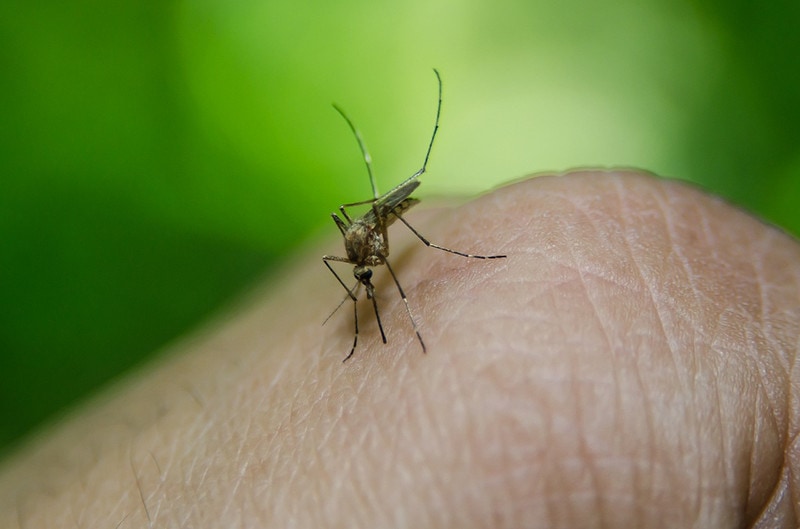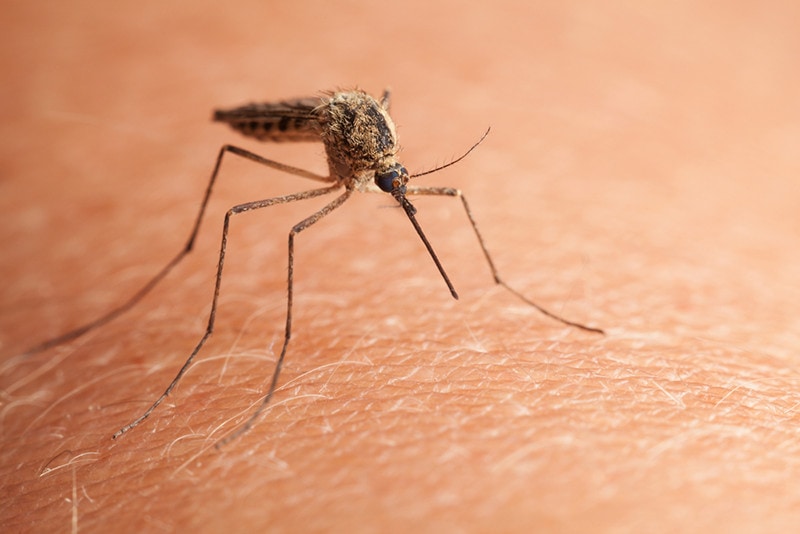6 Types of Mosquitoes in California (With Pictures)
-
Elizabeth Gray
- Last updated:

Everyone knows the discomfort of an itchy mosquito bite, especially during the summer, but these insects also carry many dangerous diseases. California doesn’t have the same humid weather as many other parts of the country, but the state is still home to several mosquito species. In this article, we’ll look specifically at six types of mosquitoes in California that pose a health risk to humans and animals.
The 6 Types of Mosquitoes in California
1. Asian Tiger Mosquito

| Scientific name: | Aedes albopictus |
| Health risks: | Zika, dengue fever, yellow fever, chikungunya fever |
Asian tiger mosquitoes are part of the Aedes genus, which represents the majority of California species. All members of this genus bite humans, and several, such as the Asian tiger mosquito, carry dangerous diseases.
This species is active during the day and at dawn or dusk. They are black with white bands on the legs and one white stripe on the thorax. Asian tiger mosquitoes lay eggs in any standing water source, no matter the size. Because of this, they thrive in city environments, putting them in close contact with many California residents.
2. Western Malaria Mosquito
| Scientific name: | Anopheles freeborni |
| Health risks: | Malaria |
Members of this mosquito genus, Anopheles, are the only known carriers of malaria worldwide. The western malaria mosquito is the most common of these species in California. The insects feast at dawn, dusk, and during the night.
They are light brown with black dashes on the wings. You can also identify members of this species by their position at rest, with the abdomen pointing upwards. Western malaria mosquitoes are generally found in rural agricultural areas. They lay eggs in algae-covered ponds and drainage areas.
3. Yellow Fever Mosquito

| Scientific name: | Aedes aegypti |
| Health risks: | Zika, dengue fever, yellow fever, chikungunya fever |
This Aedes species is an invasive mosquito first discovered in California in 2013. Known as “ankle-biters,” the yellow fever mosquitos are aggressive when feeding on humans. They bite during the day or at dawn and dusk.
This species is dark brown, with two white stripes forming the shape of a lyre on its back and white-banded legs. Like the Asian tiger mosquito, they lay eggs in any standing water they can find, making them a common urban pest. Besides yellow fever, the species carries several other tropical diseases, including Zika.
4. House Mosquito

| Scientific name: | Culex pipiens (northern) or quinquefasciatus (southern) |
| Health risks: | West Nile virus, St. Louis encephalitis virus |
The house mosquito (northern and southern) belongs to the Culex genus, the second largest in California, with 12 known established species. It’s brown with dark legs and is most active at dawn, dusk, and nighttime.
House mosquitoes lay eggs in various water sources, including ponds, containers, and drains. They’re present in both rural and city locations. These biting bugs carry diseases that threaten human and animal populations, especially the West Nile virus.
5. Western Tree-hole Mosquito
| Scientific name: | Aedes sirrensis |
| Health risks: | Heartworm disease in dogs and cats |
The Western tree-hole mosquito is the primary carrier of heartworm parasites in California. Dogs and cats are at risk of heartworm disease, which can be fatal if not treated. The mosquitoes are dark brown with white bands on their legs.
They are most active at dawn and dusk. Western tree-hole mosquitoes are named for one of their favorite egg-laying locations: empty tree holes. They’ll also utilize old tires and other containers. They’re present in many habitats and are hazardous to the pets of California.
6. Western Encephalitis Mosquito
| Scientific name: | Culex tarsalis |
| Health risks: | West Nile virus, St. Louis encephalitis virus, Western equine encephalitis virus |
These mosquitoes are most at home in rural and agricultural areas, where they lay eggs in ponds and similar water sources. Western encephalitis mosquitoes are light brown, with a light band around their biting mouths. They are most active at dawn, dusk, and after dark. As a potential carrier of several dangerous viruses, these insects threaten humans, horses, and birds. They prefer to feed on birds and mammals but won’t avoid biting people, which is how they pass the viruses between species.
Preventing Mosquito Infestations and Bites
Because mosquitoes almost always need standing water to breed and lay eggs, eliminating any potential breeding grounds is the best way to prevent infestations.
Regularly empty any containers, regardless of size, if water is present. Keep swimming pools well maintained, and consider stocking fishponds with mosquitofish. You can also change bird bath water every day to keep mosquitos away.
Regularly shake out any tarps you use to protect woodpiles or other items in your yard. Keep gutters and storm drains free of debris, so they don’t build up water. Make sure you don’t have dripping outdoor faucets that are leaving puddles (or wasting water in a drought!)
An exterminator can also assist you with mosquito-control solutions for your yard and property. You can protect yourself by using mosquito repellent during outdoor activities. For pets, you can use parasite prevention products, especially heartworm control. Some flea and tick preventatives also help repel mosquitoes.
Conclusion
California is the state to be if you enjoy outdoor activities. Unfortunately, the several mosquito species that also call the state home will be right there to ruin your adventures with itchy bites. Statewide mosquito control solutions are always underway, but you can do your part by making your slice of California paradise as inhospitable as possible for these flying pests.
Featured Image Credit: Mohamed Nuzrath, Pixabay
Contents
